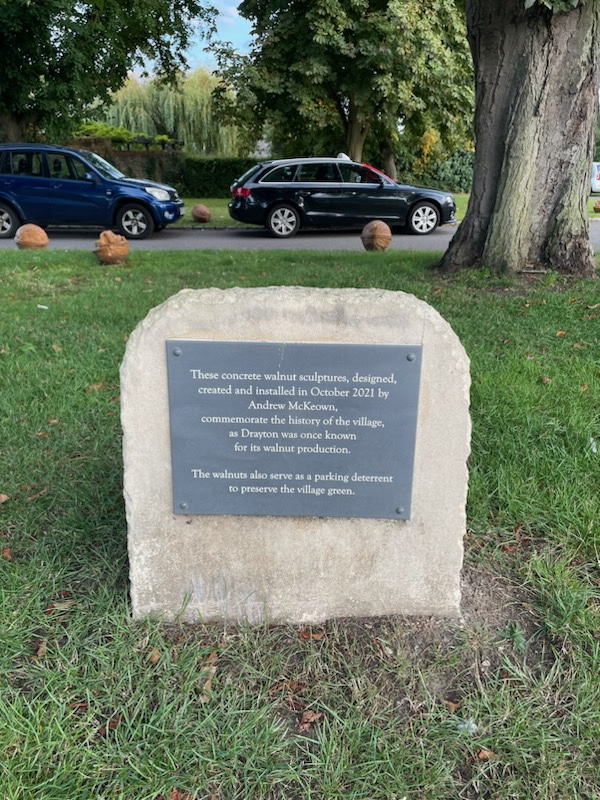
Our study of the conversion of England to the kingdom of God has been moving in reverse order. We started with Windsor Castle and England’s most recent and longest serving Christian monarch, Elizabeth II.
Then yesterday, we focused exclusively on C.S. Lewis, a predecessor of Elizabeth. Today, we continued the journey backwards in time, this time 1,150 years, to visit the places and person of Alfred the Great.
Our first stop was at the Ashmolean Museum in Oxford. The Ashmolean holds The Alfred Jewel. It’s believed to be a pointer Alfred sent to each of the bishops in England, along with his English translation of Pope Gregory the Great’s book, Pastoral Care.

The inscription on the jewel reads, “Alfred ordered me made.” The jewel was made in the 2nd half of the 9th century A.D. and is considered one of England’s greatest treasures from this time period.
We spent only a little over an hour at the Ashmolean because we had to leave for Wantage, the birthplace of Alfred the Great.
The drive through the English countryside was accompanied by interesting discussion. Ann mentioned an article in the London Times about a person tried and found guilty of “misadventure,” the British legal term for an injury caused by someone engaged in an otherwise lawful act. We chuckled at the English’s strange use of their own language, just as we had yesterday with the phrase, “privy council” – is it advice given about use of a toilet or something else?
Wantage is a small town, significant for the statue of its favorite son. There are a few suspected locations for Alfred’s palace in Wantage, but there are no ruins, just retail shops and office buildings. So, Wantage was a bit of a disappointment, but we were looking forward to our next stop.
White Horse Hill is where the Battle of Ashdown (871 A.D.) likely took place. If you don’t know the Battle of Ashdown, just remember if it wasn’t for Alfred’s victory here, the Minnesota Vikings would be America’s Team, and we might all be speaking Danish and worshipping a pagan god named Thor.
We walked more than 20 minutes to the top of the mountain and then another 10 minutes looking for the famous white horse etched into the mountain. Finally, a friendly couple, seeing our exhaustion and sensing our exasperation, pointed us in the right direction. They warned, however, that we would be disappointed.
They were right. After a strenuous hike and search, we could see nothing but part of the hind end of the horse. At that point, Ann asked if we had become the victims of a misadventure.

By the time we got away from White Horse Hill, it was late in the day. Our last stop was Sutton Courtenay, where we planned to visit the ruins of an ancient Anglo Saxon Hall, which may have been the venue for Alfred’s wedding.
We drove back and forth between Sutton Courtenay and the parish of Drayton 3 times looking for a place only vaguely described in the literature on the subject. When I finally asked a local about the location of the Anglo Saxon Hall, she looked at me like I was from outer space.
Finally, we gave up. We ended up at a small park bordered with large concrete walnuts. A plaque there read, “The concrete walnut sculptures . . . . commemorate the history of the village as Drayton was once known for its walnut production. The walnuts also serve as a parking deterrent to preserve the village green.”

That is all Sutton Courtenay and Drayton had to offer us, and I now give it to you. I know it is not much, but we shouldn’t expect every day to be full of joy and wonderment. Solomon recognized as much, when he said:
In the day of prosperity be happy, But in the day of adversity consider— God has made the one as well as the other So that man will not discover anything that will be after him.
Ecclesiastes 7:14
And while the day wasn’t exactly adversity, it wasn’t quite prosperity either. I’ll call it “prospversity” or maybe just a misadventure.
Until tomorrow. GS
